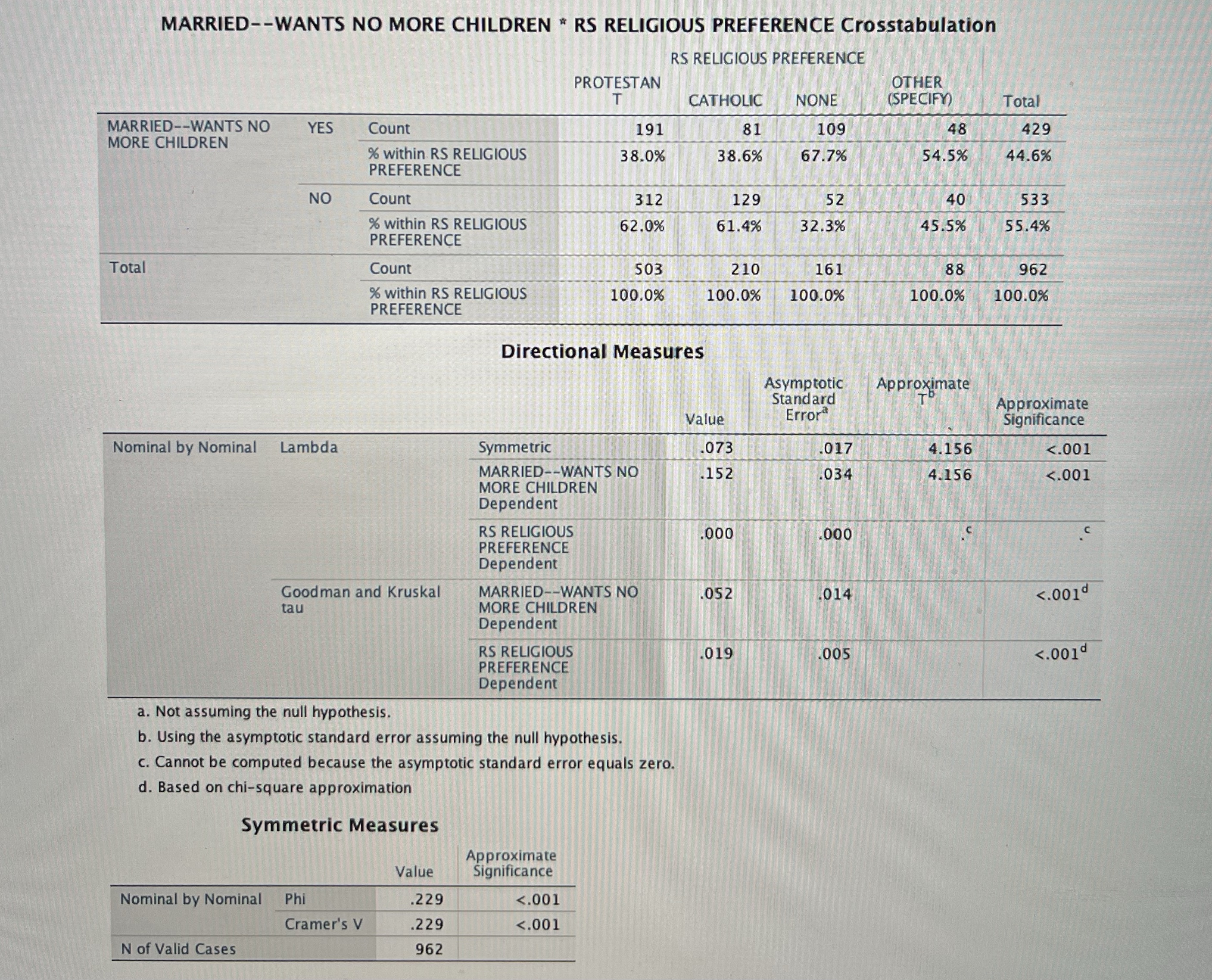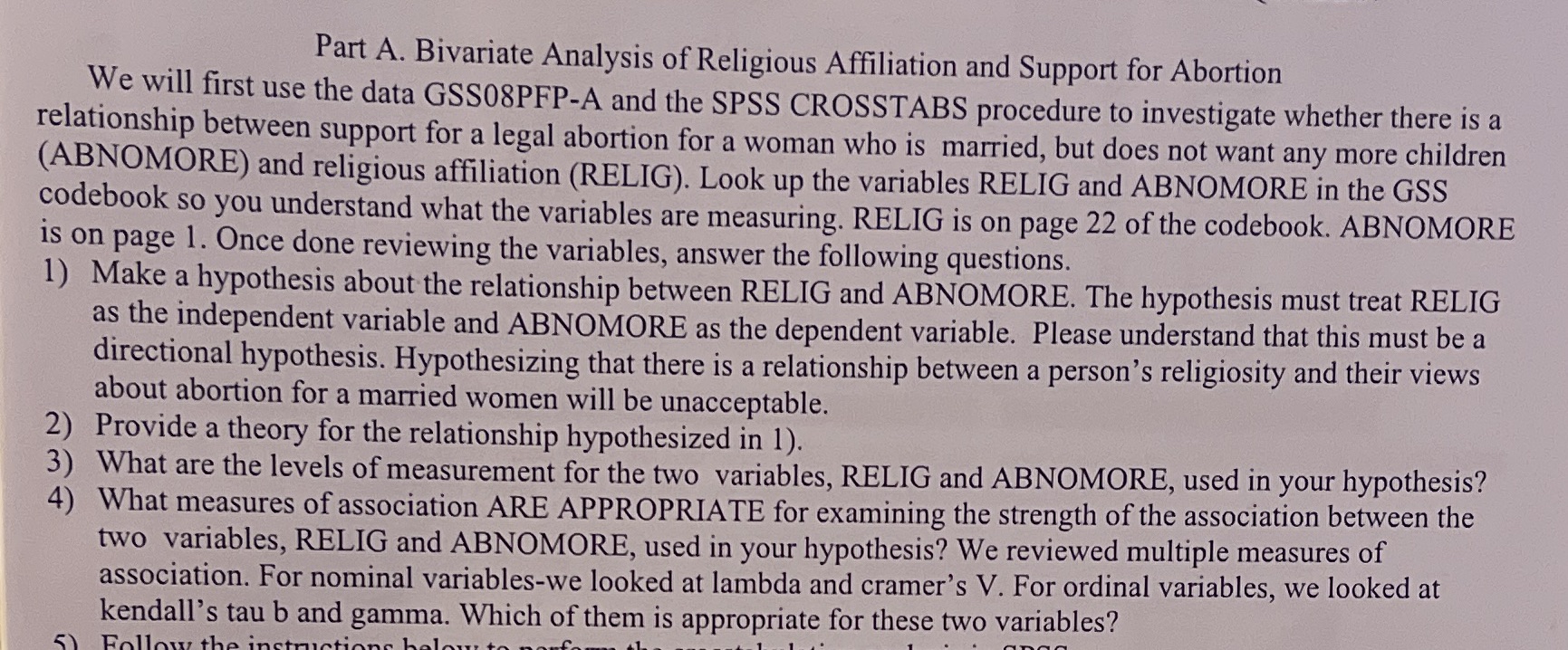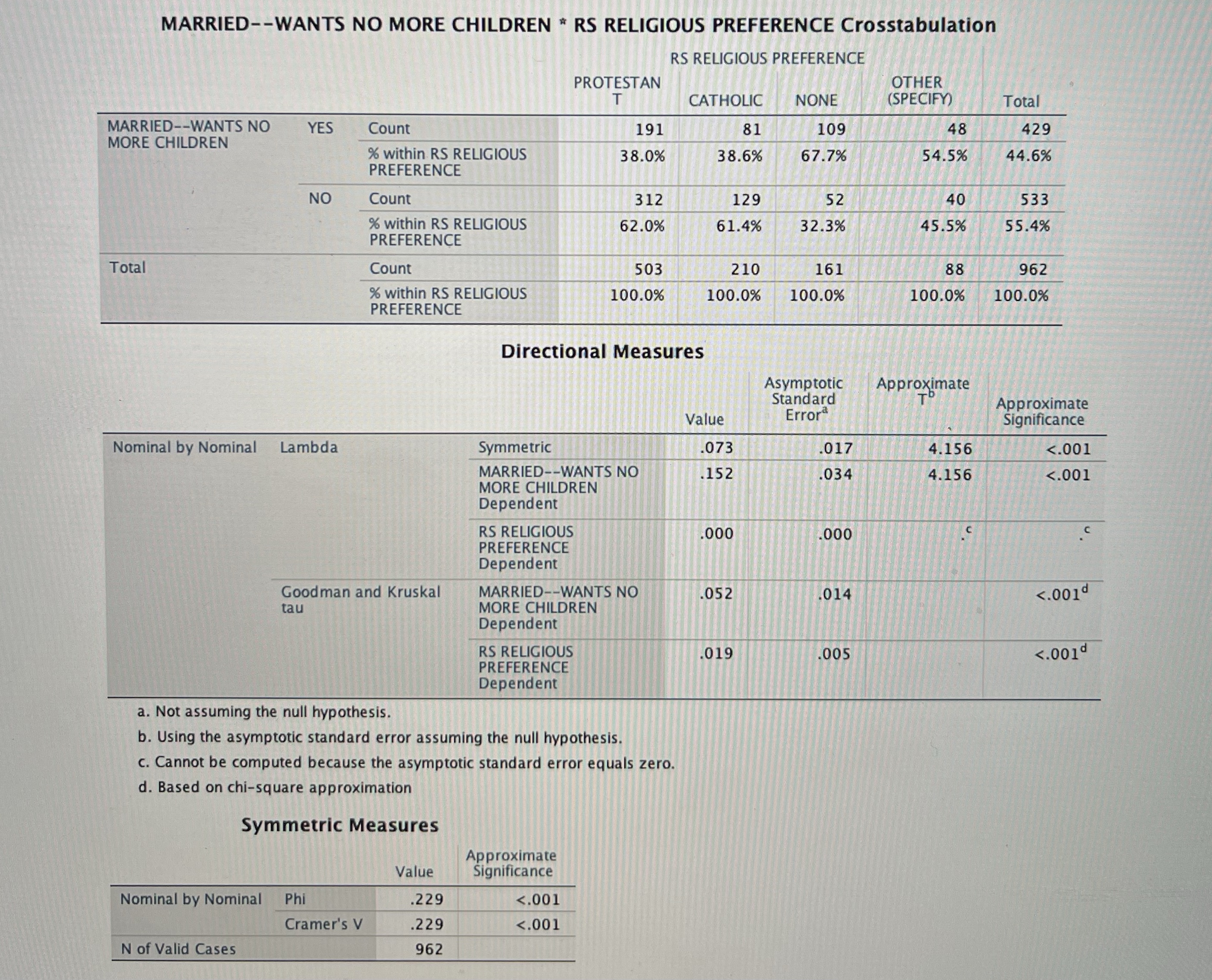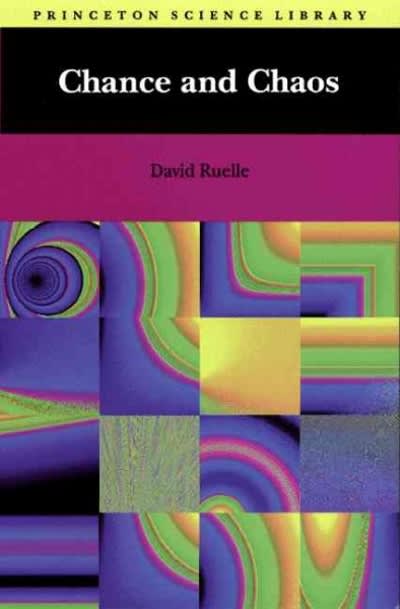
Hello, Can someone please assist, I am stuck.Will be adding every part.Thank you
Part A. Bivariate Analysis of Religious Affiliation and Support for Abortion We will first use the data GSS08PFP-A and the SPSS CROSSTABS procedure to investigate whether there is a relationship between support for a legal abortion for a woman who is married, but does not want any more children (ABNOMORE) and religious affiliation (RELIG). Look up the variables RELIG and ABNOMORE in the GSS codebook so you understand what the variables are measuring. RELIG is on page 22 of the codebook. ABNOMORE is on page 1. Once done reviewing the variables, answer the following questions. 1) Make a hypothesis about the relationship between RELIG and ABNOMORE. The hypothesis must treat RELIG as the independent variable and ABNOMORE as the dependent variable. Please understand that this must be a directional hypothesis. Hypothesizing that there is a relationship between a person's religiosity and their views about abortion for a married women will be unacceptable. 2) Provide a theory for the relationship hypothesized in 1). 3) What are the levels of measurement for the two variables, RELIG and ABNOMORE, used in your hypothesis? 4) What measures of association ARE APPROPRIATE for examining the strength of the association between the two variables, RELIG and ABNOMORE, used in your hypothesis? We reviewed multiple measures of association. For nominal variables-we looked at lambda and cramer's V. For ordinal variables, we looked at kendall's tau b and gamma. Which of them is appropriate for these two variables? 5) Follow the incMARRIED--WANTS NO MORE CHILDREN * RS RELIGIOUS PREFERENCE Crosstabulation RS RELIGIOUS PREFERENCE PROTESTAN OTHER T CATHOLIC NONE (SPECIFY) Total MARRIED--WANTS NO YES Count 191 81 109 48 429 MORE CHILDREN % within RS RELIGIOUS 38.0% 38.6% 67.7% 54.5% 44.6% PREFERENCE NO Count 312 129 52 40 533 % within RS RELIGIOUS 62.0% 61.4% 32.3% 45.5% 55.4% PREFERENCE Total Count 503 210 161 88 962 % within RS RELIGIOUS 100.0% 100.0% 100.0% 100.0% 100.0% PREFERENCE Directional Measures Asymptotic Approximate Standard Approximate Value Error Significance Nominal by Nominal Lambda Symmetric 073 017 4.156 <.001 married--wants no more children dependent rs religious preference goodman and kruskal tau .019 .005 a. not assuming the null hypothesis. b. using asymptotic standard error c. cannot be computed because equals zero. d. based on chi-square approximation symmetric measures approximate value significance nominal by phi .229 cramer v n of valid cases>









